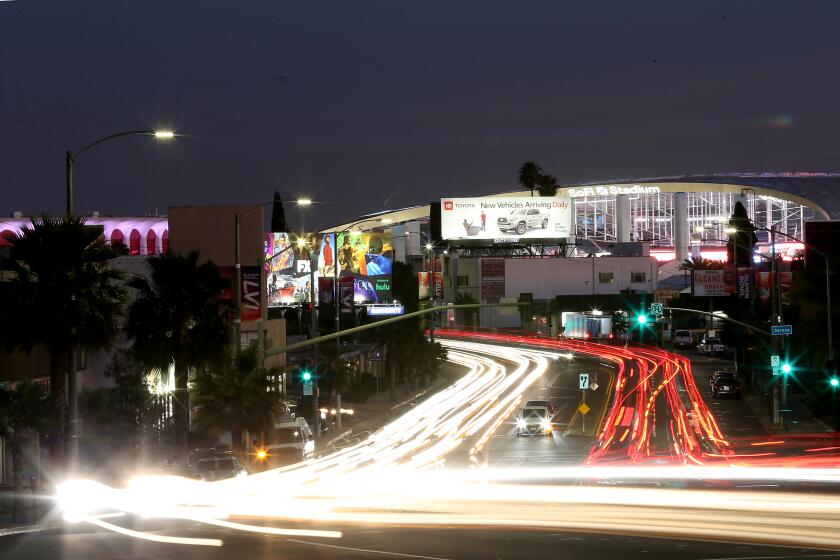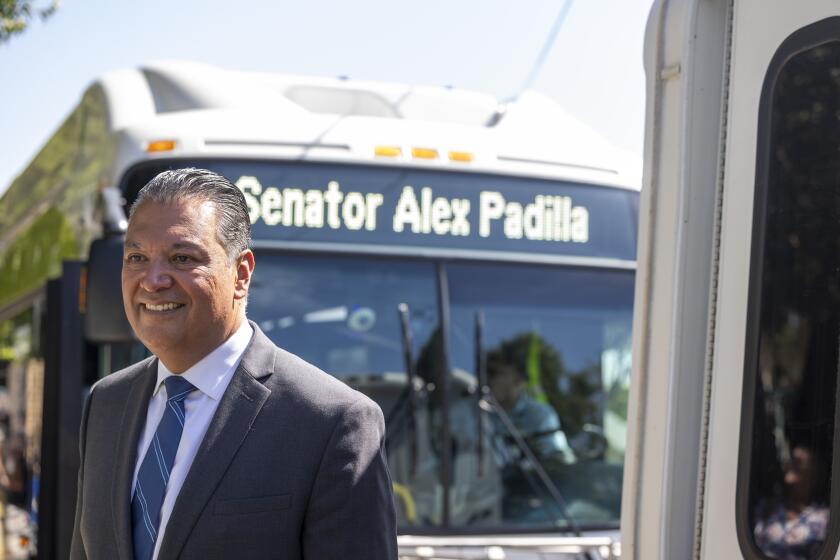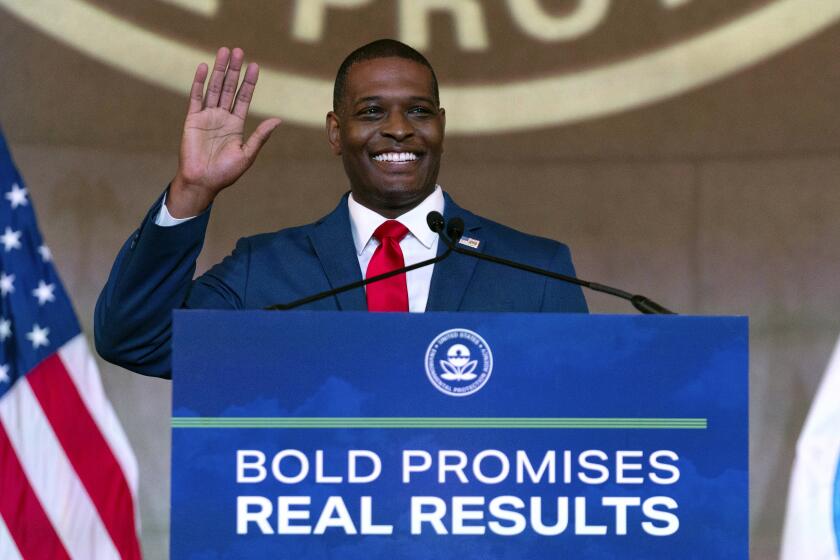A Concrete Accomplishment : Transit: Long-planned Interstate 105 opens with gala festivities. Amid the tumult, Judge Harry Pregerson takes pride in job-training and housing programs he helped ensure in the freeway corridor.
As California’s newest freeway was inaugurated Thursday morning, one of the state’s oldest judges patiently listened to politicians boasting about the project he made possible. Although Interstate 105 is formally known as the Glenn M. Anderson Freeway, more than a few in the crowd said it could just as easily be called the Harry Pregerson Freeway.
“There has never before been a freeway that had so many social programs attached to it, and this never would have happened without Judge Pregerson,” said Carlyle Hall, whose law firm filed a landmark 1972 suit that delayed and temporarily threatened the future of the project, first named the Century Freeway.
Pregerson, who turned 70 this week, is considered the key figure in hammering out an unprecedented legal agreement that got the stalled freeway project moving again. It answered environmental concerns by vastly reducing the size of the freeway. And it set aside highway money to finance a vast array of social programs--from the creation of affordable housing and job-training programs for women and minorities to providing tutoring and scholarships for poor children. It also helped make the project the most expensive in the nation’s history.
For more than two decades, Pregerson, considered a New Deal-style liberal, has personally supervised implementation of the agreement and has even managed to bootstrap child-care and homeless programs into the freeway project.
“The bottom line is I don’t walk away from anything,” said Pregerson, who grew up in Boyle Heights and was student body president at Roosevelt High School and at UCLA before studying law at UC Berkeley.
“I stuck with this case because I had a lot of my own time and energy invested in it,” he said. “I could see that if this project was done properly, if the proper tone could govern, like emphasizing the human aspects of building a freeway--job training, helping women and minority business enterprises, providing for decent safe and sanitary housing that is affordable--this project could have very beneficial consequences for Los Angeles.”
Many involved in the freeway project say Pregerson consistently took the lead in keeping the project going, frequently calling together warring parties to resolve disputes, much like a mediator during a strike.
“It’s been an extraordinary effort and an extraordinary case study in the staying power of a judge,” said UC Irvine professor Joseph Dimento, who has written a detailed study of the implementation of the consent decree titled “Ordering the Elephants to Dance.”
Pregerson, who has spent 14 years on the U.S. 9th Circuit Court of Appeals, is also known as a staunch foe of the death penalty. Those who know him say his down-to-earth, common touch serves him well in persuading people to do what he wants them to do.
But Pregerson does not shrink from using his power. One admiring attorney, who requested anonymity, called the judge “a thug for the Lord.”
Pregerson, who was seriously wounded on Okinawa during World War II and wears a Marine Corps tiepin, has been known to call adversaries into his office for early morning meetings, telling them: “Gentlemen, I just happen to have brought my lunch with me today and it could be a long day. I’m not sure yet when you’ll be able to eat.”
He clearly takes pride in the jobs and housing created as a result of the freeway agreement. He regularly takes politicians, judges and others on tours of a carpentry apprenticeship program that has provided training for 3,500 people and led to permanent jobs for 2,600 residents of the freeway corridor.
Pregerson also proudly shows visitors Academy Hall, a 50-unit apartment complex on 120th Street, financed by the I-105 housing program. Children living there participate in the EXCEL program, which provides tutors from USC and an opportunity to eventually obtain a scholarship to the university.
And he enthusiastically squires people around Casa Loma, a 110-unit housing project near Downtown Los Angeles that was designed to meet the needs of low-income single parents in the area, most of them Latinas. The Century Freeway Housing Program provided the initial $6 million for the project.
“I admire him beyond belief in terms of his commitment and the way he has overseen not only the housing program but the affirmative action program as part of that consent decree,” said Esther Valadez, executive director of Affordable Housing Associates, Casa Loma’s developer.
“This case could have gone to a judge who would have only dealt with it as a legal issue. Fortunately, it went to a judge who saw it as a way to better society.”
The judge, of course, has his critics. One Caltrans lawyer, speaking anonymously, said Pregerson had overstepped the bounds of his office. Nonetheless, the attorney said he thought the judge was trying to act in the best interests of the residents of the freeway corridor.
That was the guiding principle for the judge, said John Phillips, who negotiated the agreement. “He felt so strongly about using this project to help the disadvantaged,” Phillips said.
Although all housing is supposed to be completed by 1997, Pregerson made it clear Thursday that his interest and his impact on the $2.2-billion freeway would not end at that point. He noted that the consent decree calls for the affordability of rental housing to be monitored until 2027.
Pointing toward his 7-year-old grandson during the opening ceremonies, the judge said: “I’m going to give Brad a copy of the decree and tell him to make sure it continues to be enforced.”
More to Read
Sign up for Essential California
The most important California stories and recommendations in your inbox every morning.
You may occasionally receive promotional content from the Los Angeles Times.






